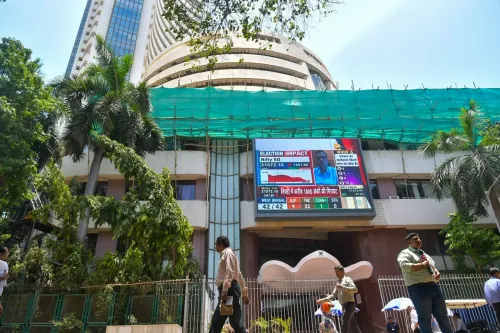Has RBI’s Financial Inclusion Index Increased to 67 in March?

Synopsis
Key Takeaways
- FI-Index increased to 67 in March 2025.
- Represents a 4.3% growth from the previous year.
- Measured through access, usage, and quality of services.
- Significant improvements in financial service quality.
- The index is published annually by the RBI.
Mumbai, July 22 (NationPress) The Reserve Bank of India (RBI) announced on Tuesday that the nation's Financial Inclusion Index (FI-Index) surged to 67 in March 2025, reflecting a notable 4.3 percent rise compared to the previous year.
According to the central bank's statement, the index was recorded at 64.2 in March 2024.
"The FI-Index for the fiscal year ending March 2025 has been compiled, showing a value of 67 compared to 64.2 in March 2024. Growth has been observed across all sub-indices: access, usage, and quality," said the RBI in a release.
This index serves as a tool created by the RBI to evaluate the extent to which financial services are accessible to the populace throughout the nation.
It gauges the level of financial inclusion utilizing data from diverse sectors, including banking, insurance, investments, pensions, and postal services.
The index operates on a scale of 0 to 100, where 0 signifies total financial exclusion and 100 indicates complete financial inclusion.
The RBI highlighted that this year's advancement in the index was primarily driven by enhanced performance in the usage and quality of financial services.
This implies that not only are more individuals utilizing financial products, but they are also reaping benefits from improved service quality.
The RBI also attributed the positive outcomes to ongoing initiatives in financial education and awareness campaigns.
The Financial Inclusion Index is published annually and was initially introduced in August 2021, covering data for the year ending March 2021.
It is constructed based on three core parameters—access, usage, and quality—each carrying distinct weightages: access at 35 percent, usage at 45 percent, and quality at 20 percent.
The RBI developed this index in collaboration with the government and sector regulators to present a comprehensive overview of the inclusiveness of the financial system.
The recent increase in the FI-Index signifies a steady advancement in enhancing the accessibility and utility of financial services for individuals across India.










